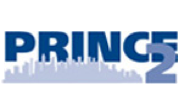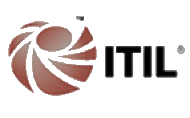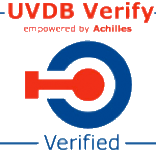The key benefits of our unrivalled expertise
- Project Management
- Reduce risk
- Manage large scale
- Business transformation
- Benefits realisation
- Flexible service
- PRINCE2 / MSP qualified
Connectivity
Intersite-VPN
If your organisation has multiple sites or permanent home workers, we can provide solutions for creating a virtual private network across your existing Internet connections.
We employ the latest encryption technologies, so you can be reassured that your data will be safe from interception.
Using this approach can drastically reduce the cost of inter-site links and is very quick to set up.
Managed Fibre
TNP can utilise existing fibre networks in the proximity of an organisation to provide a cost-effective connection into the TNP backbone network. Whether this is provided utilising Openreach, Virgin Media, or another fibre network, at TNP we have existing relationships with a variety of managed service partners.
A fibre optic connection provides the fastest, most future-proof connectivity solution for your organisation.
It is worth being aware that if there is currently no fibre from any operators on your site, there may be excess construction charges and digging work involved in getting a fibre connection onto your premises.
GEA-FTTC
GEA – FTTC (Generic Ethernet Access – Fibre to the Cabinet), or FTTC Ethernet, is available in an ever-increasing number of locations throughout the UK as Openreach enable cabinets in more exchange areas.
Normal FTTC fibre broadband services are contended on the BT wholesale network and share bandwidth with residential FTTC and ADSL users which can lead to contention and slow-downs. FTTC Ethernet, however, provides the same business service level guarantees as EFM, but with a lower set-up cost, and in addition none of your bandwidth is shared with other users.
FTTC allows for speeds of up to 80Mb/s downstream and 20Mb/s upstream, and therefore up to a 20Mb/s symmetrical service can be supplied over a single FTTC Ethernet circuit. This is possible due to the closer proximity of the FTTC-Ethernet enabled cabinet to the served premises than the telephone exchange, resulting in a shorter copper line length and faster achievable speeds.
TNP offer a business-grade, wholly FTTC Ethernet service which is uncapped, unlimited and uncontended, as are all of our connectivity services. FTTC Ethernet can be used to provide an Internet connection, or as an inter-site circuit.
EFM (Bonded Copper)
EFM, or ‘Ethernet in the First Mile’ is an access technology based on bonding traditional copper pairs together to provide a reliable, fast, low-latency ethernet service. EFM provides a lower cost alternative to fibre by providing connectivity between 5Mb/s and 20Mb/s, depending on the number of copper pairs used and the distance you are from the telephone exchange. The use of two or more pairs provides a level of redundancy to the EFM service so that if one pair experiences a temporary issue, the other pair will ensure the connection remains reliable. Because most businesses will already have sufficient copper pairs on site to provide an EFM service, the lead times for providing EFM connectivity tend to be shorter than those of a managed fibre connection (typically within 30 days).
Microwave Radio
Microwave radio connectivity can provide a high bandwidth symmetrical link in areas where fibre would be too cost-prohibitive or where the copper line length is too great for EFM.
The staff at TNP specialise in microwave radio connectivity in both the licensed and unlicensed spectrums. Speeds typically range from 10Mb/s to over 1Gb/s symmetrical depending on the equipment and frequencies used. We have highly advanced site-survey software which allows us to perform a desktop survey before surveying on site. This can be invaluable in saving time and money by determining whether a radio link is feasible before even visiting a site.
Field engineers at TNP are working at height trained and accredited to climb radio structures which allows us to perform installation and troubleshooting of microwave radio faults directly without using third party contractors, thus saving time where it’s needed most.
Dark Fibre
At TNP, we think outside of the box and do not follow a prescribed method of connectivity. Sometimes, when two sites are close to each other, it can make sense to perform a dig to lay dark fibre, or if there is fibre nearby, to utilise existing dark fibre in the ground. While such a dig can incur high costs at the beginning, it means the connection can be a lot cheaper in the longer term. Depending on your funding model, this may be preferable. At TNP we can survey your site and determine whether laying or utilising dark fibre may be an option.
Dark Fibre Planning & Design
The engineers, architects and project managers at TNP have years of experience of designing and implementing dark fibre networks, from a single link connecting two school or business premises to large-scale, redundant fibre optic rings connecting many core sites and premises (FTTP) on behalf of ISPs, local councils and rural broadband CICs.
Depending on your needs and budget, there are a number of approaches we can take:
Fully owned infrastructure (ducting and fibre), usually under a NRSWA Section 50 license
Leased ducting/subducts, owned fibre
Leased fibre cores or P2P dark fibre links
Overhead/catenary for short-haul links
A hybrid network consisting of a mixture of the above
CWDM, DWDM and Long Range Backhaul
To maximise the potential of having access to dark fibre links, whether owned or leased, in some situations it is advisable to utilise Wavelength Division Multiplexing (WDM). This allows a number of channels to be carried over a single duplex or simplex fibre path, each channel capable of carrying anything from 100Mb/s to the latest 100Gb/s technology.
There are many challenges in deploying this technology due to the tight optical margins and the need to appreciate optical losses in all parts of the system, which requires significant training and experience. The staff at TNP have a proven track record of designing and implementing a number of complex WDM solutions, some carrying many 10Gb/s channels with single hops of over 120km.
Splicing & Testing
Fibre engineers at TNP are fully trained and qualified in indoor and outdoor fibre-optic fusion splicing and testing. We have all the tools, equipment, and ancillary training required to perform splicing in almost any location:
Fusion splicer and preparation tools
OTDR and calibrated light source and power meter (ILM measurements)
All equipment serviced and calibrated regularly
Specialist splicing van and 4×4 vehicles
NRSWA traffic management qualified operatives, supervisors and signage
DSL Fault Finding
As a custodian of a large LLU network. TNP have a wealth of in-house expertise in copper-based fault diagnostics and fault finding. Using advanced diagnostic equipment we can diagnose cable breaks, short circuits, dry joints and narrow and wide band interference.
Temporary Event Connections
Internet connectivity and communications are now ubiquitous. TNP has extensive experience of deploying temporary internet connections and internal communications links at events and concerts.
Such examples include:-
Providing temporary internet, structured cabling and wiring for the BBC’s Strictly Come Dancing
Providing a wired and wireless network for the Blackpool Illuminations Switch On enabling the floor managers and the stars themselves to access the Internet and communicate with each other
Providing a full back-office solution for annual business conferences
Emergency Connections
When disaster strikes communication links are essential. After a disaster, restoration of traditional fixed-line services can sometimes take weeks.
TNP have successfully deployed temporary emergency connections for customers.
Previous emergency connections have been deployed in response to major flooding events, building damage due to fire and failures of existing telecoms suppliers.
Using a range of technologies and the many skills at our disposal we can restore your connectivity quickly and efficiently.
Applicable solutions
Health Checks
Often, organisations can undertake a costly network upgrade or replacement in the belief it will solve an ongoing issue only to find that the issue still persists. TNP can use its years of networking experience to undertake a network health check for your organisation allowing you to target your expenditure and resources to the source of the problem.
TNP experience
Network Review – TNP were tasked to undertake a network review for a Scottish public sector organisation. TNP carried out a high level review of their network architecture and uncovered several areas which had a lack of resilience owing to logical configuration issues. As part of this review, rather than the planned complete network refresh, TNP were able to recommend only the addition of a switch to a backup datacentre, saving the organisation capital outlay but still delivering resilience and capacity improvements.
HSCN
TNP are a stage 2 accredited HSCN provider.
The Health and Social Care Network (HSCN) is a new, next-generation data network for health and care organisations which replaces N3. It provides the underlying network arrangements to help integrate and transform health and social care services by enabling them to access and share information more reliably, flexibly and efficiently.
Health and care providers are able to obtain network connectivity from multiple suppliers in a competitive market place and in collaboration with other health and social care organisations.
TNP & HSCN
TNP have been involved with the development of HSCN from it’s inception working with NHS Digital through the industry consultation phase, we were amongst the initial wave of suppliers to achieve compliance and connect to the peering networks in Manchester & London.
HSCN Services
TNP approach all requirements in a consultative manner and can deliver compliant HSCN services in a variety of ways, either as a straightforward N3 replacement connection or intergrating into a COIN or Wide-Area network, it’s important to note that owing to the new, open and inter-operable nature of HSCN, the way that an organisation has always consumed network services may not be the only option open in the new architecture. TNP will work with you to understand your network architecture and propose the best route to support your requirements now and into the future.
TNP’s service design supports multiple services over a single bearer circuit allowing organisations to blend HSCN access, Internet, WAN/COIN, patient/visitor WiFi and even cloud connectivity to AWS or Azure.
Multi Tenancy Networks
Whether you need to subdivide your network owing to sharing space with another department or organisation, or whether to meet security compliance requirements. TNP can assist with allowing you to securely share your resources, whether sharing your LAN with security demarcation zones, or a WAN where we can use MPLS and VRFs to seggregate traffic.
TNP experience
LAN Sharing – A local authority had a requirement to share premises with an NHS organisation. TNP designed and commissioned a segregated common LAN, whilst meeting the security principles of both PSN and N3. This approach eliminated duplication of equipment and WAN circuits ultimately lowering cost.
New Buildings
Moving to or establishing new premises can be a huge undertaking for any organisation. Normally there is an army of consultants and engineers taking care of the architecture, power and plumbing, but nobody to take care of your network infrastructure which is often then specified as an afterthought leaving you with a lack of control. TNP can assist, becoming an integral part of the design team, making the planning and specification of your IT infrastructure as important as the electrical wiring. TNP can also assist with the specification of wireless access, undertaking desktop surveys and advising on placement of access points to ensure full coverage once the building is handed over. We can also help you with the project management of the building delivery and handover, ensuring that your IT infrastructure is not sidelined.
TNP experience
New HQ building – A local authority was planning for a relocation to a new headquarters. TNP were appointed to assist with all aspects of the building network infrastructure fit-out and commissioning, including specification of new datacentre infrastructure, wireless access design, procurement of new equipment and stage-by-stage relocation of existing. Full project management services were provided to ensure that all network services were ready for staff moves.
Comms room and data cabling specifications – A large HE organisation was having issues with building and cabling contractors installing network infrastructure to varying quality standards. A suite of documents were created, setting out minimum installation standards and mandating manufacturers to ensure quality and consistency leading to a network infrastructure that is ultimately easier to support.
PCI
The Payment Cards Industry Data Security Standard (PCI-DSS) sets out a number of compliance requirements for organisations that handle credit card information. TNP can bring its experience of assisting other organisations to comply with these standards as well as its own ISO27001 ISMS to your organisation.
TNP experience
PCI Compliance – A local authority required assistance with its PCI compliance activities. As well as providing advice and guidance, TNP were contracted to provide periodic WiFi scanning services to meet the PCI standard requirement to regularly check for unauthorised wireless access points
Security Compliance
PCI, PSN, ISO27001, ISMS. There are a myriad of cyber security standards that may apply to your organisation, either just to maintain best practice, or to meet compliance or legislative requirements. TNP can bring its experience of maintaining and applying its own ISO27001-compliant ISMS to your security challenges. TNP are an engineering-led company, so this advice is not simply restricted to process flows and risk matrices. Our assistance can comprise of practical and hands-on solutions to your compliance issues.
TNP experience
PSN Compliance – A local authority had identified that its network security architecture didn’t align with PSN standards. TNP undertook a review of the existing architecture and firewall rulesets and proposed a change to a two-tier firewall architecture to provide greater security, flexibility and alignment with PSN standards.
Unified Communications
Communications are a vital tool for any organisation. Until recently, developments in this area have focused on PABX replacement; however, newer technologies can allow organisations to benefit from Unified Communications, delivering more benefit than just the installation of a newer-looking telephone handset. TNP can help your organisation with your own communications strategy, mapping your path towards the level of Unified Communications that’s right for your organisation. If you’ve already decided that you require Unified Communications for your organisation, TNP can supply, install and maintain your new Unified Communications platform.
TNP experience
Unified Communications Upgrade – A local authority already had a VoIP telephone system, however the software version installed was out of support and they were not utilising any Unified Communications functionality. TNP assisted with a review, firstly of the organisation’s appetite and requirement for UC and then of the marketplace to ascertain whether an upgrade or complete replacement would be the best path forward. TNP then assisted with the subsequent upgrade of the installed system and the deployment of Unified Communications including softphones, instant messaging & presence and web conferencing.
WAN Design and Build
TNP’s heritage is in wide area networks, so designing and deploying them is part of our DNA. Whether you’ve a requirement to cluster together a variety of locations or want to review your existing WAN provision, TNP can assist with both reviewing and implementing a new or replacement network. As a Communications Provider (CP) we have access to all wholesale products and can leverage our relationships with other telecommunications providers to provide you with a multi-vendor WAN, but with a single point of contact and management, add to this our ability to use innovative connectivity methods so that you get a best-of-breed network that’s right for your organisation.
TNP experience
Shetland Islands WAN – TNP enable Shetland Islands Council to save up to £1.6 million by utilising and re-deploying existing network assets across some of the most northerly and challenging terrain in the UK
Blackpool Council – TNP, as a strategic partner of the council incorporate existing network assets into a new wide area network allowing cancellation of many managed-services circuits and reducing ongoing operational expenditure









